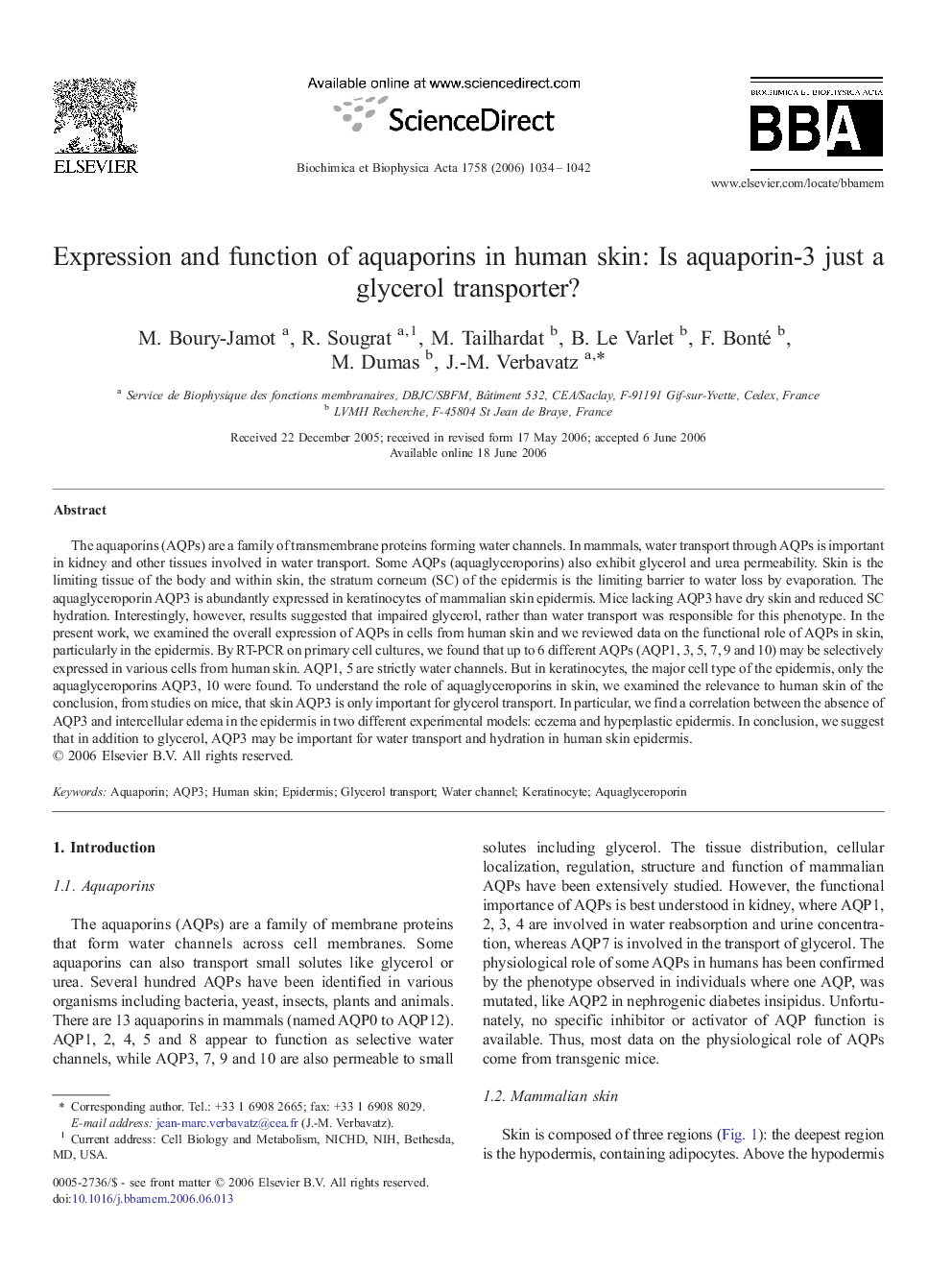| Article ID | Journal | Published Year | Pages | File Type |
|---|---|---|---|---|
| 1946053 | Biochimica et Biophysica Acta (BBA) - Biomembranes | 2006 | 9 Pages |
The aquaporins (AQPs) are a family of transmembrane proteins forming water channels. In mammals, water transport through AQPs is important in kidney and other tissues involved in water transport. Some AQPs (aquaglyceroporins) also exhibit glycerol and urea permeability. Skin is the limiting tissue of the body and within skin, the stratum corneum (SC) of the epidermis is the limiting barrier to water loss by evaporation. The aquaglyceroporin AQP3 is abundantly expressed in keratinocytes of mammalian skin epidermis. Mice lacking AQP3 have dry skin and reduced SC hydration. Interestingly, however, results suggested that impaired glycerol, rather than water transport was responsible for this phenotype. In the present work, we examined the overall expression of AQPs in cells from human skin and we reviewed data on the functional role of AQPs in skin, particularly in the epidermis. By RT-PCR on primary cell cultures, we found that up to 6 different AQPs (AQP1, 3, 5, 7, 9 and 10) may be selectively expressed in various cells from human skin. AQP1, 5 are strictly water channels. But in keratinocytes, the major cell type of the epidermis, only the aquaglyceroporins AQP3, 10 were found. To understand the role of aquaglyceroporins in skin, we examined the relevance to human skin of the conclusion, from studies on mice, that skin AQP3 is only important for glycerol transport. In particular, we find a correlation between the absence of AQP3 and intercellular edema in the epidermis in two different experimental models: eczema and hyperplastic epidermis. In conclusion, we suggest that in addition to glycerol, AQP3 may be important for water transport and hydration in human skin epidermis.
